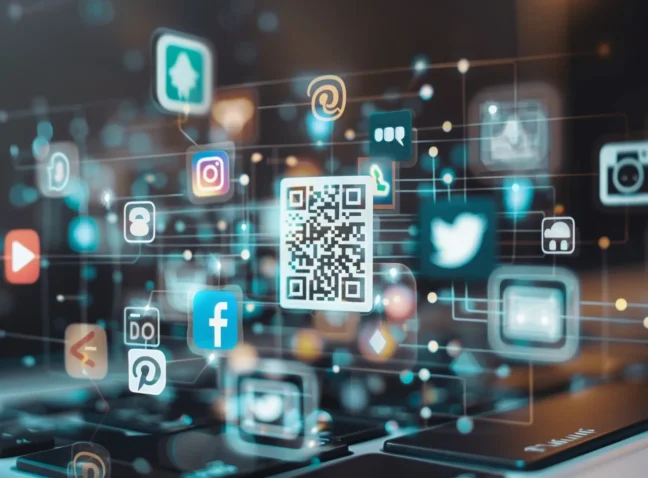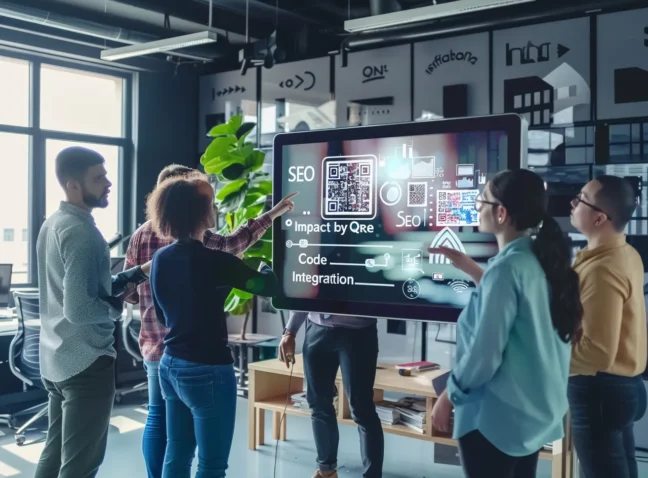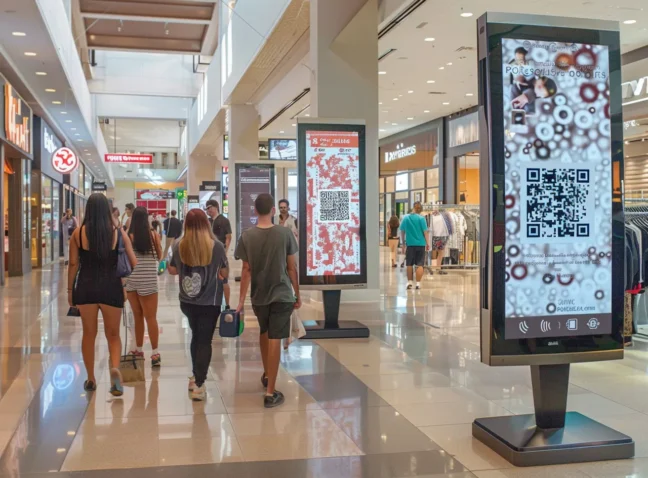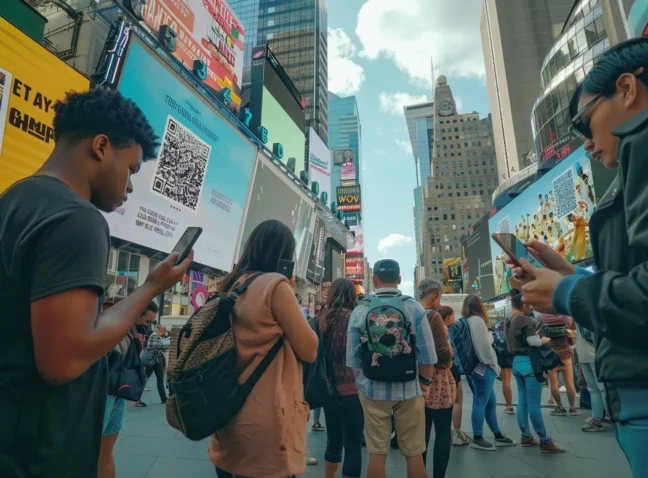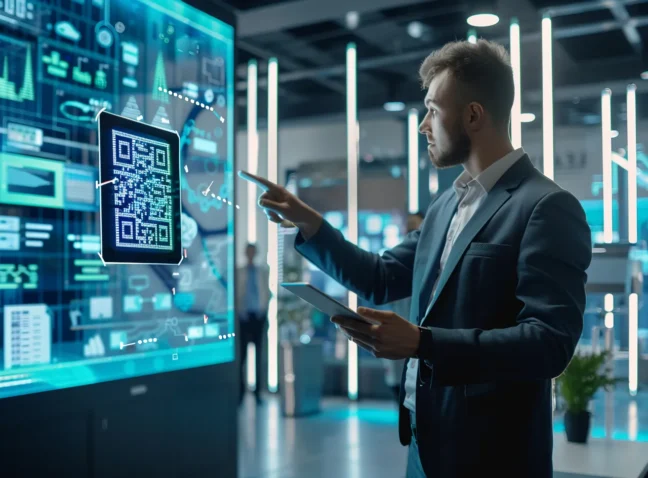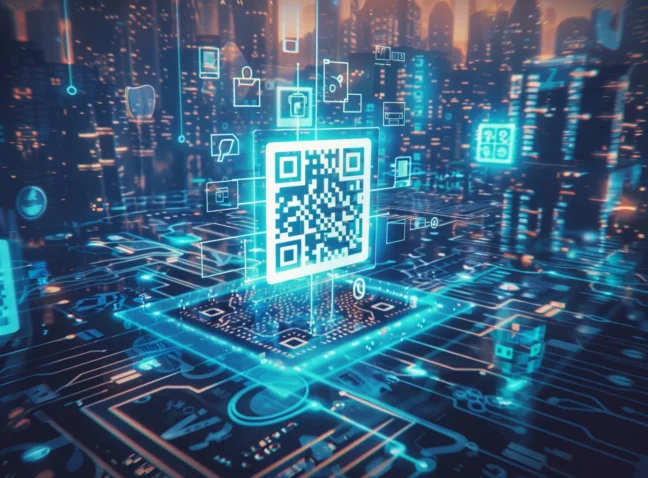QR codes have become a key player in facilitating quick and secure payments. These compact codes bridge the digital and physical commerce gap, enabling users to transact with just a scan. Ideal for businesses and consumers alike, QR codes offer a seamless payment solution that fits our mobile-driven lifestyle. As we delve into the nuances of using QR codes for payments, discover how this technology enhances transaction efficiency and fortifies payment security. Stay tuned to uncover the myriad benefits QR codes bring to the table.
Why QR Codes for Payments Dominate Today’s Transactions?
QR codes have emerged in the payment industry, offering a seamless, contactless, and efficient transaction method. Fueled by smartphone advancements and the demand for contactless transactions during the pandemic, QR codes have become essential. Their simplicity allows customers to initiate payments swiftly, enhancing their experience and simplifying business transactions. With the ability to store vast information compactly, QR codes enable quick and straightforward transactions. Businesses can offer modern payment solutions without hefty investments by eliminating the need for physical cards or cash. QR codes provide a cost-effective, easy-to-implement solution for businesses of all sizes, ensuring accessibility and efficiency in the payment process.
QR Codes for Payments: Modernize Transactions Firmly
QR codes have emerged as a pivotal tool for facilitating seamless payments. The statistics speak volumes about QR code payments’ widespread adoption and effectiveness. By 2025, over 2.7 billion individuals globally will utilize QR codes for transactions, showcasing an unprecedented surge in digital payment methods. China, a leader in this domain, witnessed QR code transactions surpassing $23 trillion in 2023 alone, underscoring its dominance in the world’s largest market. The surge in QR code payments, as evidenced by a staggering 185% increase in usage in 2022, signifies a significant shift towards contactless transactions worldwide.
Additionally, it’s anticipated that QR code payments will constitute 57% of all mobile transactions globally by 2024, emphasizing its indispensable role in the mobile payment ecosystem. Businesses embracing QR code payments have reported tangible benefits, with retailers experiencing an average increase of 22% in transaction volume and 14% in customer retention rates. These figures highlight the practicality and efficiency of QR codes in enhancing business operations.
Advantages of QR Codes for Payments: Facilitate Transactions
QR code payments are transforming the landscape of financial transactions, offering a swift and secure alternative for remittances. This digital method accelerates the checkout process and fortifies security, making it an increasingly popular choice among businesses and consumers alike:
- QR code payments have seen a 41% global increase in usage from 2020 to 2021, signaling a shift towards more seamless transactions. (Statista 2022)
- Businesses report a 12% reduction in transaction times, leading to improved efficiency and heightened customer satisfaction. (Forbes 2023)
- 68% of small merchants observed a rise in sales after adopting QR code payment solutions, contributing to wider financial inclusion. (McKinsey & Company 2022)
- With a mere 0.02% fraud rate, QR code payments assure high security for all parties involved. (NFCW 2021)
- The QR code payment market is expected to reach $2.7 trillion by 2025, underscoring its growing acceptance and reliability in the payment sector. (Business Insider 2023)
The Drawbacks of QR Codes for Digital Transactions
Despite the numerous advantages, QR code transactions do face certain challenges. One notable concern is the risk of QR code tampering or phishing, where malicious codes can mislead users to fraudulent websites, creating security vulnerabilities. Furthermore, although QR codes are generally accessible, some of the population remains unfamiliar or hesitant towards this technology, which could restrict its wider acceptance. Another factor to consider is the dependency on smartphones and internet access. QR code transactions might not be a viable alternative in regions with limited connectivity or among individuals without smartphones.
Moreover, it’s important for businesses to ensure their QR codes are visible and to provide training for their staff to assist customers, which could require additional time and resources. By addressing these challenges, QR code payments can become more seamless and secure for everyone involved.
Challenges of QR Codes for Payments: Navigating Security Risks and Accessibility Concerns
QR code payments are reshaping the landscape of digital transactions, offering a convenient bridge between physical and online retail environments. However, this innovation has challenges, as security and accessibility concerns loom large for both consumers and businesses:
- QR code payment transactions face a security risk, with 43% of consumers expressing concerns about potential fraud and data breaches.
- Studies show that 36% of consumers find QR code payments inconvenient due to the need for a smartphone and a stable internet connection, limiting accessibility.
- Despite their increasing popularity, QR codes still suffer from a lack of universal compatibility, as 29% of businesses struggle with integration issues across different platforms and systems.
- QR code errors are common, with a reported 25% failure rate during scanning, leading to user frustration and potential transaction delays.
- Privacy concerns persist, with 18% of consumers worried about collecting personal data through QR code payments, raising regulatory and ethical considerations.
Financial Winners Using QR Code Transactions
Global businesses and brands have quickly embraced QR code technology due to its versatility and efficiency. In areas like China, QR codes are now a common sight for payments, with platforms like WeChat Pay and Alipay at the forefront. These systems incorporate QR codes, allowing smooth transactions in various settings, from retail stores to street vendors.
On a global scale, numerous brands integrate QR codes into their operations, from payment processes to marketing strategies. For instance, dining establishments utilize QR codes to access menus and process payments, providing a seamless dining experience. Retailers have also adopted QR codes, placing them at checkout points and on product tags for instant purchases or to provide detailed product information. The adoption of QR code technology by these brands not only simplifies transactions but also enables the collection of valuable customer data. This information is instrumental in customizing services, offers, and promotions, thus improving the customer experience and fostering brand loyalty.
- Over 40% of transactions at Starbucks in China are completed via QR codes, indicating the successful integration of this technology into their payment systems.
- Walmart has seen a 57% increase in QR code-based payments through their mobile app over the past year, illustrating a significant uptick in consumer adoption.
- McDonald’s has experienced a 20% increase in sales attributed to QR code payments, showing the technology’s popularity in the fast-food industry.
- Coca-Cola’s introduction of QR code-enabled vending machines resulted in a 30% increase in transactions within the first six months, proving the effectiveness of QR codes in enhancing customer convenience.
- Amazon Pay has observed a remarkable 45% year-over-year growth in the use of QR codes for online transactions, highlighting the adaptability of QR code technology in e-commerce environments.
These statistics underscore the growing significance of QR code technology across various sectors, demonstrating its key role in modernizing payment and marketing strategies to meet evolving consumer demands.
QR code generator for Payments
Nothing can beat quick and comfortable wires. Ready to make transactions smoother with QR codes? Head over to our QR code generator page and see how easy it is to create a seamless payment solution that’s perfect for anyone, anywhere. Let’s get started!
